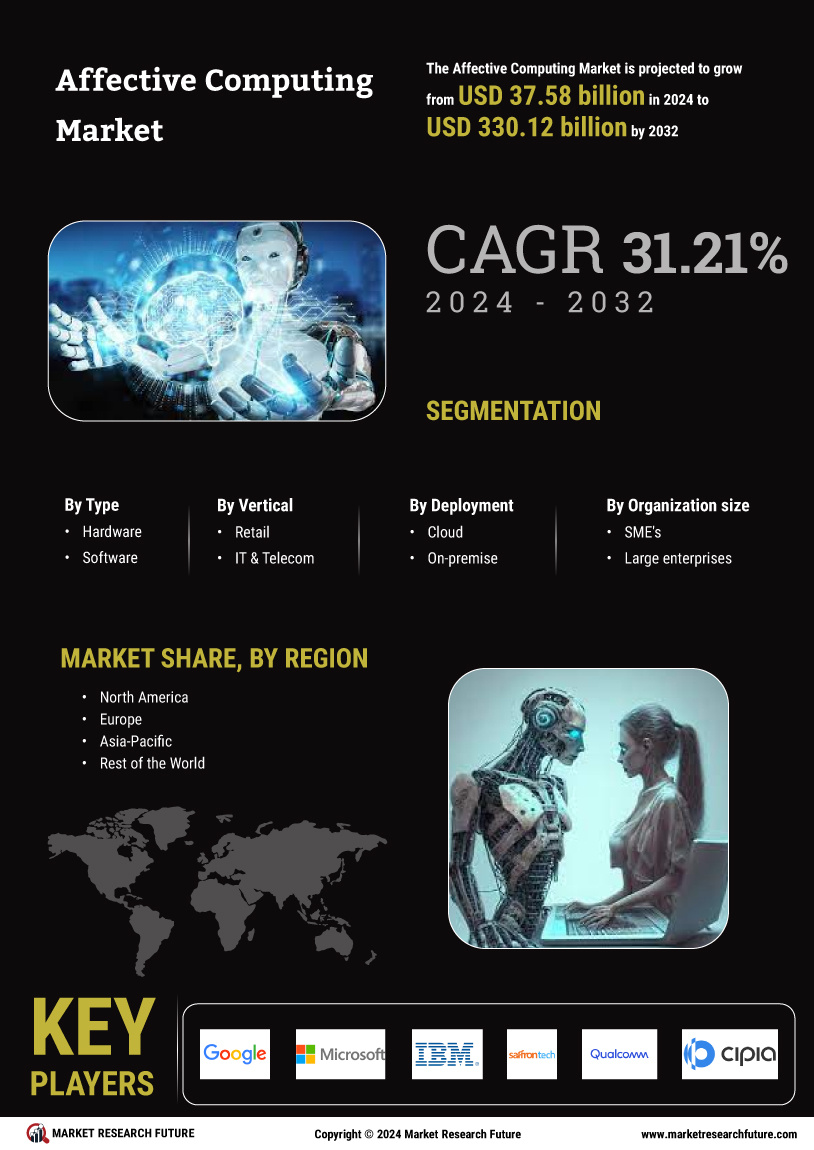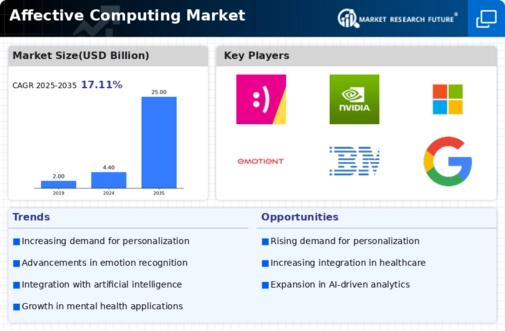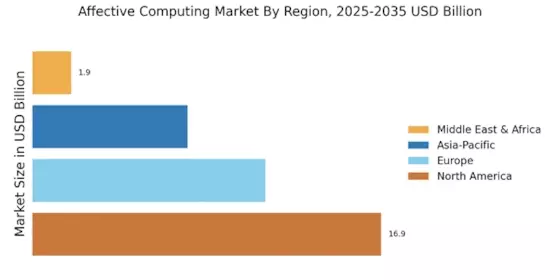The Affective Computing Market is currently characterized by a dynamic competitive landscape, driven by rapid technological advancements and increasing demand for emotionally intelligent systems. Major players such as Microsoft (US), IBM (US), and Google (US) are at the forefront, leveraging their extensive resources to innovate and expand their offerings. Microsoft (US) has been focusing on integrating affective computing capabilities into its cloud services, enhancing user experience through emotional analytics. Meanwhile, IBM (US) emphasizes partnerships with academic institutions to foster research in emotional AI, thereby positioning itself as a thought leader in the field. Google (US) continues to invest heavily in machine learning and AI, aiming to refine its algorithms for better emotional recognition, which collectively shapes a competitive environment that is increasingly reliant on technological prowess and strategic collaborations.
The market structure appears moderately fragmented, with a mix of established tech giants and emerging startups. Key players are adopting various business tactics, such as localizing their operations to better serve regional markets and optimizing supply chains to enhance efficiency. This collective influence of major companies not only intensifies competition but also drives innovation, as firms strive to differentiate themselves through unique offerings and superior customer experiences.
In August 2025, Microsoft (US) announced a partnership with a leading mental health organization to develop tools that utilize affective computing for therapeutic applications. This strategic move underscores Microsoft's commitment to harnessing emotional AI for social good, potentially opening new revenue streams while enhancing its brand reputation. The collaboration is likely to position Microsoft as a pioneer in the intersection of technology and mental health, reflecting a growing trend towards socially responsible innovation.
In September 2025, IBM (US) launched a new suite of AI-driven emotional analytics tools aimed at the retail sector. This initiative is significant as it allows retailers to better understand customer emotions and preferences, thereby enhancing personalized marketing strategies. By focusing on the retail industry, IBM is not only expanding its market reach but also reinforcing its position as a leader in applying affective computing to practical business challenges.
In July 2025, Google (US) unveiled an upgraded version of its AI platform that includes advanced emotional recognition features. This upgrade is crucial as it enhances the platform's capabilities, allowing developers to create more responsive applications that can adapt to user emotions in real-time. Such advancements may solidify Google's competitive edge in the AI space, as emotional intelligence becomes increasingly vital in user engagement strategies.
As of October 2025, the competitive trends in the Affective Computing Market are heavily influenced by digitalization, sustainability, and the integration of AI technologies. Strategic alliances are becoming more prevalent, as companies recognize the value of collaboration in driving innovation and expanding market reach. Looking ahead, it is anticipated that competitive differentiation will increasingly pivot from traditional price-based strategies to a focus on innovation, technological advancements, and the reliability of supply chains. This shift suggests that companies that prioritize emotional intelligence and user-centric design will likely emerge as leaders in this evolving landscape.


















Leave a Comment